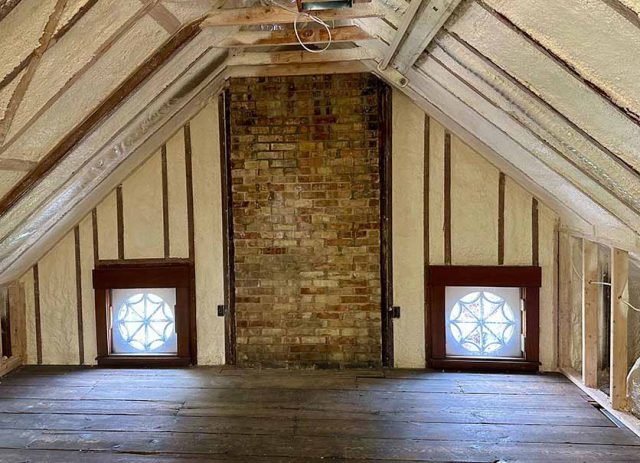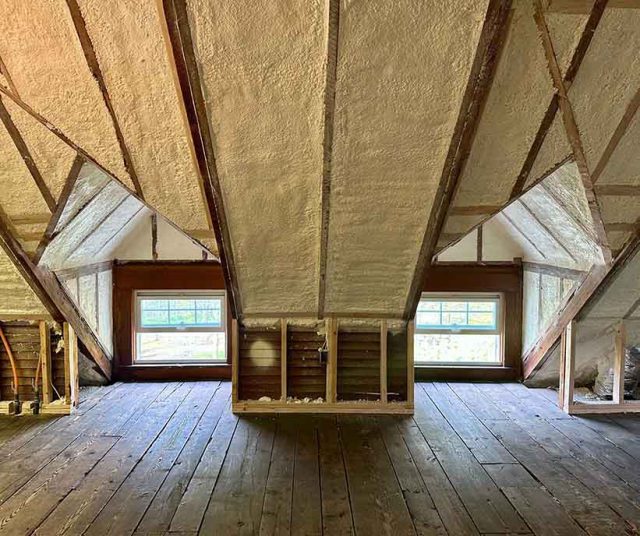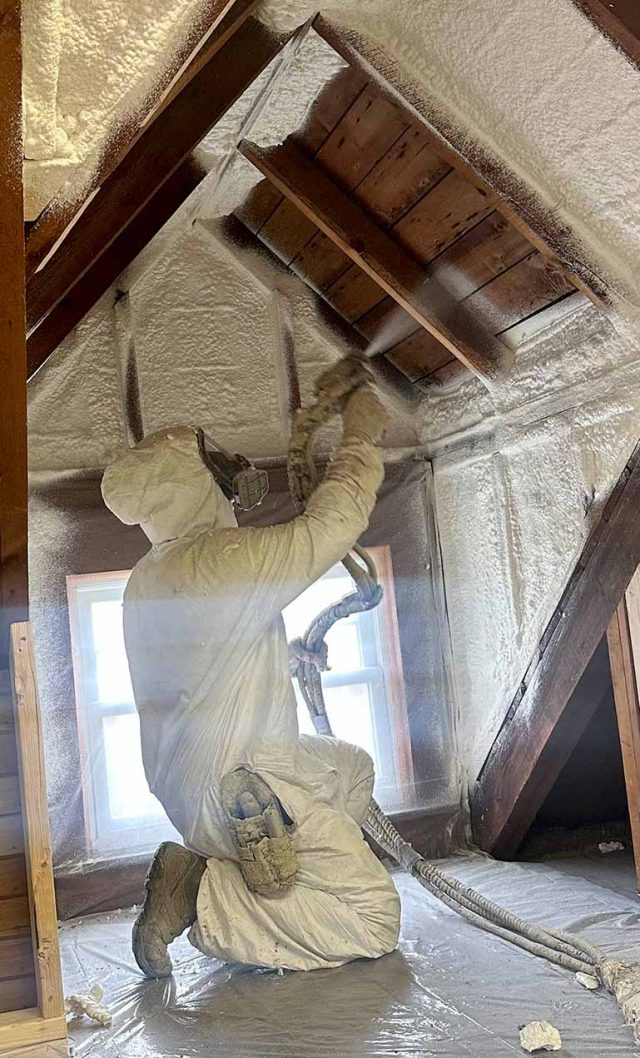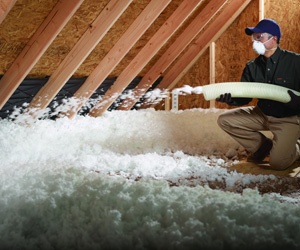Our weather here in Michigan can be intense thanks to our humid continental climate with hot summers and freezing winters. That’s why we need to be ready for every kind of weather. One of the best ways to stay comfortable in your home year-round is by improving your insulation.
When you think of upgrading your home’s insulation, your attic space may be the first place that comes to mind. But do you really know why it matters to have a well-insulated attic? Let’s explore three important reasons to upgrade your attic insulation.
Save Energy and Lower Your Utility Bills
You use a lot of energy in your home throughout the year, whether it’s to cool you down or warm you up. In fact, heating and cooling a home takes up more than half of your total energy use. And without proper attic insulation, you can count on up to one third of your home’s heat to be lost in winter through your attic while adding about 60% of unwanted heat gain in the summer.

Thankfully, proper attic insulation helps trap heat indoors during the winter and block heat in the summer. That means your HVAC system (or your furnace if you have one) doesn’t have to work as hard to keep you and your family comfy. And less energy use means lower utility bills and a weightier wallet for you to enjoy.
Based on our climate zone, the EPA (Environmental Protection Agency) recommends that Michigan attics should have insulation levels reaching an R-value of R49 to R60. The higher the R-value, the greater the insulating power of the insulation materials. Adding insulation is a smart investment that can pay for itself fast. Plus, using less energy means reduced greenhouse gas emissions, which is better for the planet.
But wait, there are even more ways to save. Many Michigan utility companies offer rebates for installing insulation. For example, Consumers Energy offers up to $200 back for upgrading your attic to an insulation level of R-60 or above. And don’t miss out on federal tax incentives you can also earn.
Prevent Air Leaks and Heat Loss (Stack Effect)

As we just read, insulation is a powerful way to help stop heat transfer and save energy. But it alone can’t stop stack effect. Stack effect works like this: Warm air rises and escapes through air leaks (penetration points) in your attic. These air leaks allow cold outside air into your attic which then gets pulled into the lower levels of your home where it creates constant air movement that makes your home drafty and uncomfortable.
According to the Department of Energy, air leaks alone can account for up to 40% of your heating costs. The best way to help block this unwanted airflow is with the powerful pairing of proper attic insulation and air sealing. Together they stop unwanted air movement.
Think of them this way: Insulation alone is like wearing an unzipped winter coat. But when you seal and insulate together, it’s like wearing a wool sweater with a windbreaker, they’re just better together. As a result, with adequate insulation and air sealing, you can expect to lower your utility bills by an average of 15%.
And it’s not just a winter issue. In summer, air sealing and insulation keep hot attic air from moving into your living space, making any upstairs rooms cooler.
Maintain Year-Round Comfort and Improve HVAC Efficiency
An insulated and air sealed attic acts as a thermal blanket for your home that controls heat transfer through the roof. It keeps rooms more comfortable in all seasons, especially for older homes that may not meet modern standards. There are many benefits of attic insulation for both you and your HVAC system.

You and your family will enjoy:
- More consistent indoor temperatures throughout all seasons.
- Upstairs bedrooms that stay warmer in winter and cooler in summer.
- Reduced temperature fluctuations between rooms.
- Fewer drafts and improved overall comfort.
- Improved indoor air quality thanks to the reduction of dust and outdoor pollutants.
- Reduced noise from outside and from rain on the roof.
- More consistent temperatures between rooms.
Your HVAC system will benefit from:
- Not having to work harder to maintain set temperatures.
- The decrease of unwanted heat flow.
- Running in shorter cycles rather than continuously.
- A reduced workload that can extend its life due to less wear and tear.
Remember, it’s recommended that Michigan attics have an insulating power of R-49 to R60, which translates to approximately sixteen to eighteen inches of fiberglass or cellulose insulation. Higher R-values will maximize your home’s energy efficiency and comfort.
Bringing Energy Efficiency to our Grand Rapids Community
It’s easy to see that installing attic insulation and air sealing in your Michigan home is one of the most cost-effective ways to cut your energy bill, reduce energy loss, and improve comfort. Don’t let another season go by with an under insulated attic. Count on the expert insulation team at Whitson Insulation Company, your local trusted insulation contractor, to get the job done right. We’ve been serving our Grand Rapids community since 1978 and are here to make your home an energy-efficient haven you can enjoy all year long. Contact us today for a free estimate and start enjoying the full benefits of attic insulation.
___________________________________________________________________
References
Consumers Energy. (n.d.). Windows and insulation rebates. https://www.consumersenergy.com/residential/save-money-and-energy/rebates/windows-and-insulation
DTE Energy. (n.d.). Insulation. https://www.dteenergy.com/us/en/residential/save-money-energy/rebates-and-offers/Insulation.html
Green Building Advisor. (2010, January 11). Understanding Stack Effect. https://www.greenbuildingadvisor.com/article/understanding-the-stack-effect
Insulation Institute. (n.d.). How Much Attic Insulation Do I Need? https://insulationinstitute.org/im-a-homeowner/about-insulation/how-much-do-i-need/?cn-reloaded=1
Michigan. (2025, April 22). In Wikipedia – The Free Encyclopedia. https://en.wikipedia.org/wiki/Michigan
Michigan Saves. (n.d.). About us. https://michigansaves.org/about-us/
U.S. Department of Energy. (2010). Guide to home insulation (DOE/EE-0340). U.S. Department of Energy, Energy Efficiency & Renewable Energy. https://www.energy.gov/sites/prod/files/guide_to_home_insulation.pdf
U.S. Environmental Protection Agency. (n.d.). Seal and insulate with ENERGY STAR. ENERGY STAR. https://www.energystar.gov/saveathome/seal_insulate

